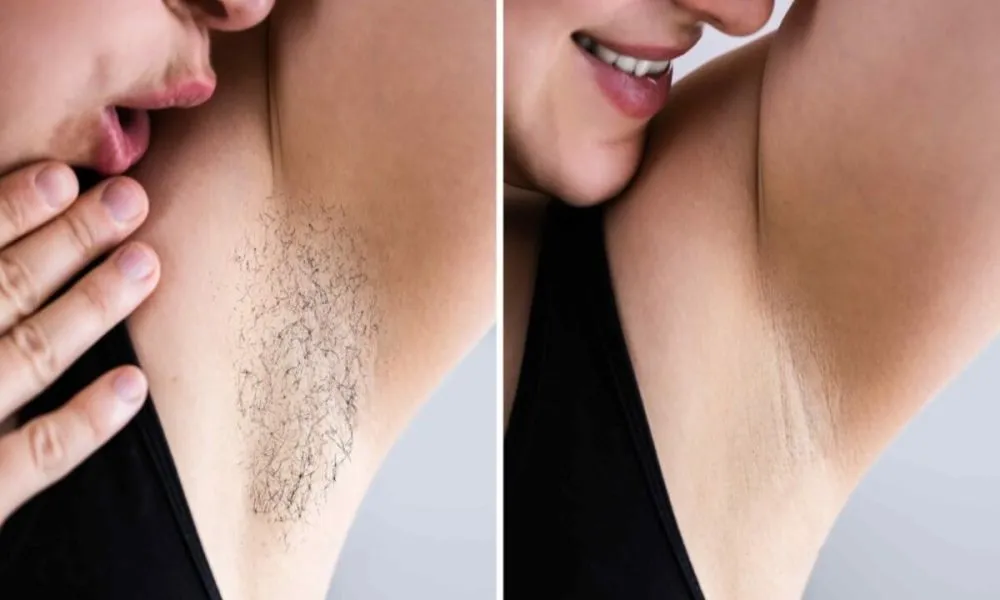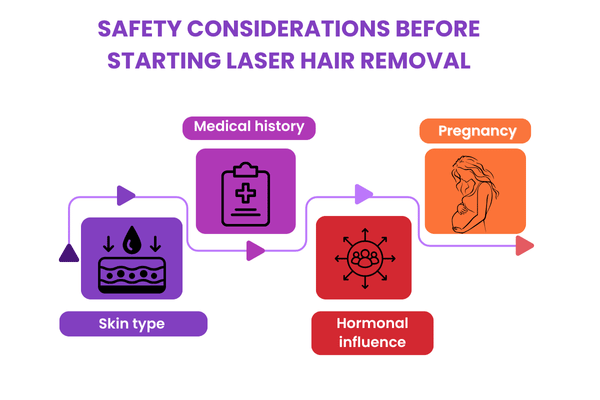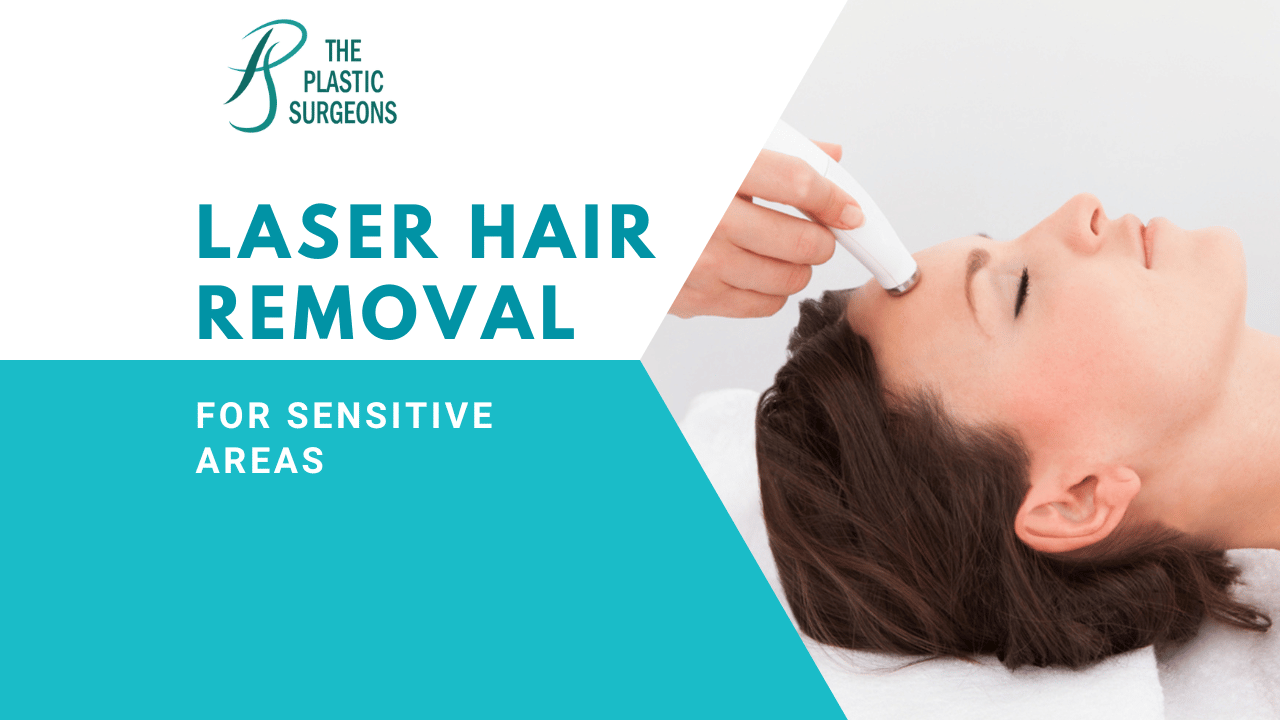Introduction
Unwanted hair in sensitive areas can be difficult to manage with traditional methods like shaving, waxing, or creams. These methods often cause irritation, bumps, or ingrown hairs, making people search for safer and long-lasting options. Laser hair removal has become a trusted choice for people looking for smooth skin without the constant hassle of temporary solutions.
This blog will guide you through everything you need to know about laser hair removal for sensitive areas. We will explore how it works, its benefits, safety precautions, preparation tips, aftercare, and frequently asked questions. If you’re considering this treatment, you’ll find valuable insights to make the process comfortable and safe.
Understanding Laser Hair Removal for Sensitive Areas

Laser hair removal uses focused light energy to target the pigment in hair follicles. The heat damages the follicle and reduces hair growth over time. While the treatment is widely used on arms, legs, and face, it’s equally effective for sensitive regions like:
- Bikini line and Brazilian area
- Underarms
- Chest and abdomen
- Back and shoulders
- Face (upper lip, chin, sideburns)
These areas often have delicate skin, so professional guidance is essential to avoid irritation and complications.
Why People Choose Laser Hair Removal for Sensitive Zones
Long-lasting results
Unlike waxing or shaving, laser treatment offers a reduction in hair growth that can last for months or years after a series of sessions.
Reduced skin irritation
Sensitive skin often reacts to razors, waxing strips, or chemical creams. Laser treatment minimizes these side effects.
Precision
The laser can target dark, coarse hairs without harming the surrounding skin, which is crucial for intimate and delicate regions.
Time-saving
Multiple sessions are required, but once complete, you save time compared to constant shaving or waxing.
Safety Considerations Before Starting
Laser hair removal is safe when performed by trained professionals. Still, certain factors must be considered:

- Skin type: People with light skin and dark hair respond best, but advanced technology now caters to most skin tones.
- Medical history: Inform your doctor about any skin conditions, allergies, or medications.
- Hormonal influence: Conditions like PCOS may affect results, requiring more sessions.
- Pregnancy: Most experts advise avoiding laser treatments during pregnancy.
A patch test is always done before the full procedure to check for adverse reactions.
Preparation Tips for Sensitive Area Treatment
If you’re planning to undergo laser hair removal, proper preparation ensures safety and effectiveness.
- Avoid sun exposure: Tanned skin increases the risk of burns or pigmentation.
- Shave the area: Shaving 24 hours before the session helps the laser reach the follicles effectively.
- Skip waxing and plucking: These methods remove the follicle, making laser treatment less effective.
- Stay away from harsh products: Avoid scrubs, retinoids, or strong creams at least a week before treatment.
- Wear loose clothing: Comfort matters, especially after treating intimate areas.
What to Expect During the Procedure
Many people worry about pain and discomfort. Here’s what typically happens during a session:
- The area is cleaned and sometimes numbing cream is applied.
- The practitioner adjusts the laser settings according to your skin and hair type.
- Quick pulses of light are delivered to the follicles.
- You may feel a snapping sensation, like a rubber band against the skin.
- The session can last from 15 minutes to an hour, depending on the area.
The number of sessions usually ranges from 6 to 8, spaced a few weeks apart.
Aftercare and Precautions
Caring for your skin after treatment is just as important as the procedure itself.
- Soothe the skin: Apply aloe vera or a cooling gel recommended by your doctor.
- Avoid heat: Skip hot baths, saunas, or intense workouts for 48 hours.
- Use sunscreen: Sensitive treated skin is prone to sun damage, so apply broad-spectrum SPF.
- Don’t scratch or wax: Let the skin heal naturally.
- Expect shedding: Hair will fall out gradually over 1–2 weeks.
Possible Side Effects and How to Handle Them
While laser treatment is safe, you may notice temporary effects:
- Redness or swelling: Usually subsides within a few hours.
- Mild discomfort: Cooling packs or doctor-recommended creams help.
- Pigmentation changes: Rare, but can occur if aftercare is not followed.
- Blistering or scarring: Very rare when done by a certified professional.
Choosing an experienced specialist reduces these risks significantly.
How to Choose the Right Clinic or Specialist
Sensitive areas require extra caution, so selecting the right clinic is crucial. Look for:
- Board-certified plastic surgeons or dermatologists
- Clinics with advanced laser technology suitable for all skin types
- Transparent pricing and realistic expectations
- Positive patient reviews and proven results
- A clean and hygienic environment
This is where Dr. Vinay Jacob and Dr. Ashish Magdum at The Plastic Surgeons stand out. With board-certified expertise, state-of-the-art facilities, and a patient-first approach, they ensure treatments are safe, effective, and tailored to your needs. Their international experience spans surgical, non-surgical, and reconstructive procedures, including laser treatments, hair transplant, liposuction, tummy tuck, rhinoplasty, facelift, breast augmentation, and gynecomastia. With them, you are in safe hands.
Myths and Facts About Laser Hair Removal
Myth 1: Laser hair removal is painful
Fact: The sensation is tolerable and far less painful than waxing for most people.
Myth 2: It works in one session
Fact: Multiple sessions are necessary for long-lasting results.
Myth 3: It’s unsafe for dark skin
Fact: Modern lasers can safely treat various skin tones.
Myth 4: Results are permanent
Fact: It offers long-term reduction, but occasional maintenance sessions may be required.
Myth 5: It causes infertility
Fact: There is no scientific evidence linking laser treatment to fertility issues.
FAQs
1. Is laser hair removal safe for the bikini area?
Yes, when performed by a trained specialist, it is safe and effective. A patch test is usually recommended before full treatment.
2. How many sessions will I need?
On average, 6 to 8 sessions are required for best results, depending on hair thickness, growth cycle, and the treated area.
3. Can I do laser hair removal if I have sensitive skin?
Yes, but extra care is taken. A qualified doctor will adjust the laser settings to minimize irritation.
4. Will the hair come back after treatment?
Laser reduces growth significantly, but some hair may regrow lighter and finer. Maintenance sessions can help.
5. What should I avoid before and after the treatment?
Avoid sun exposure, waxing, and harsh products before treatment. Afterward, protect your skin with sunscreen and skip heat activities for a few days.
Conclusion
Laser hair removal for sensitive areas is a safe and effective option when performed by trained professionals. With the right preparation, proper aftercare, and a trusted specialist, you can enjoy smooth skin without the constant cycle of shaving or waxing.
If you’re considering this treatment, consult an experienced team like Dr. Vinay Jacob and Dr. Ashish Magdum at The Plastic Surgeons, where expertise and patient care go hand in hand. Take the first step toward long-lasting confidence and comfort with a treatment designed for your needs.



